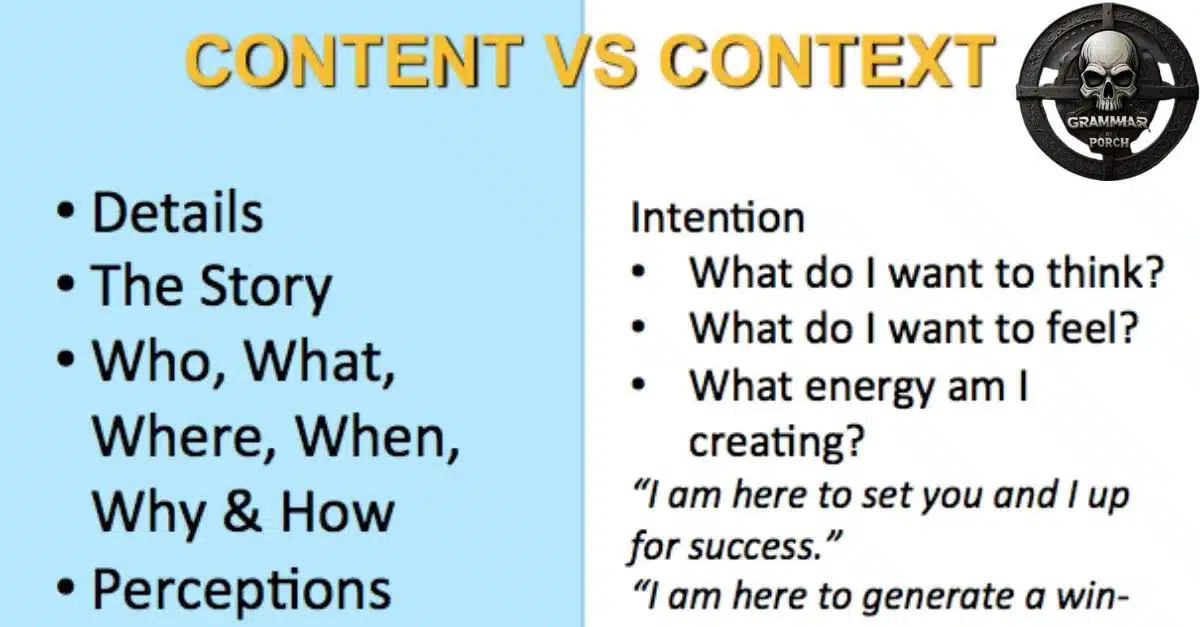Effective communication often hinges on understanding two essential elements: content vs context. While these terms are used widely, many find them confusing or even interchangeable. However, content and context are distinct concepts that serve different roles in shaping meaning.
Knowing the difference between the two can help you create messages that connect with your audience and avoid common pitfalls of miscommunication. This article explores the meaning of content and context and delves into how each impacts communication, from written material to visual and interactive media..
Why is There Confusion?
“Content” is the information being shared (words, images, audio), while “context” is the surrounding background that influences its meaning. Understanding both is key to clear communication, as the same content can vary in meaning depending on context.
What is Content?
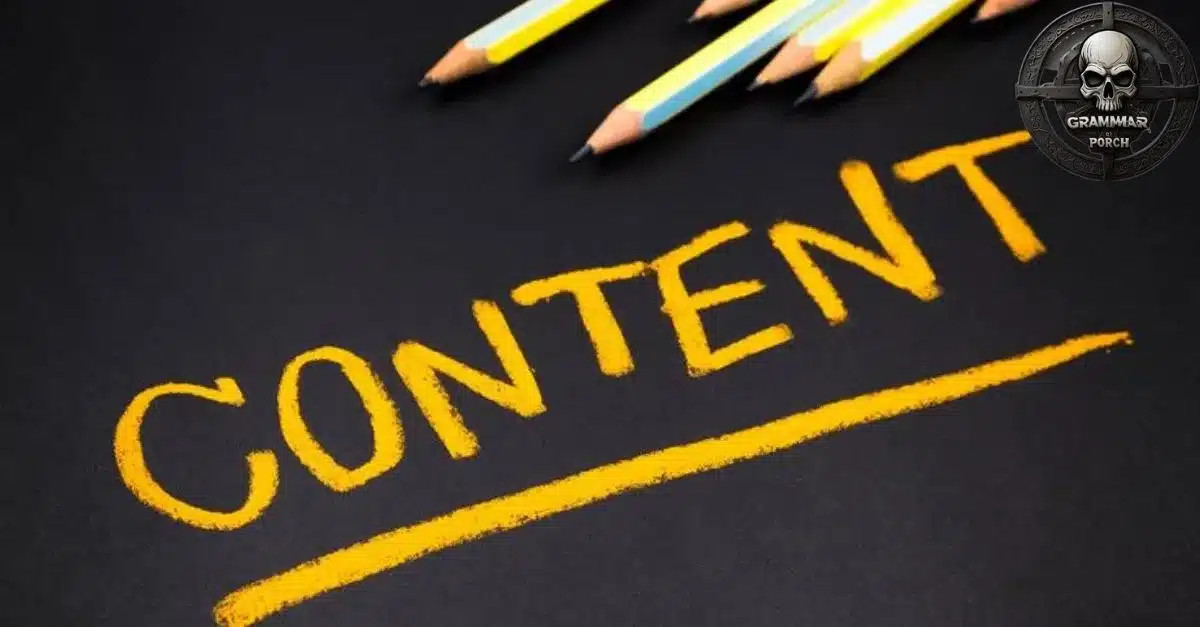
Is the Content Word Correct?
The word content is correct and widely accepted when describing the information shared through various forms like text, images, or audio.
Content is central to communication in media, education, and the arts because it represents what is being communicated directly to the audience.
Definition
Content can be defined as the substance or information contained within any form of communication. It is what you see, hear, or read directly, such as the words in a book, the visuals in a movie, or the sounds in a song. This is the essence of what is conveyed to the audience.
Meaning
The meaning of content lies in its function as the main message or idea. Content includes any material you interact with to receive information, entertainment, or insight.
It is meant to inform, engage, or persuade the audience and can be produced in countless ways, depending on the purpose and platform.
Types of Content
There are different types of content, each suited to various forms of communication. Written content includes books, articles, and essays; visual content covers images, videos, and infographics; audio content consists of music, podcasts, and speeches; and interactive content includes quizzes, simulations, and social media posts.
Each type plays a unique role in communication and requires specific techniques to reach the intended audience effectively.
How Content Changes Meaning
The meaning of content can shift significantly depending on word choice, tone, structure, and format. For example, a news article might convey a factual report.
While a poem may express emotion, even if both are about the same event. The structure, style, and form of content help shape its meaning and how it impacts the audience.
What is Context?

Is the Context Word Correct?
The word context is accurate when referring to the setting or circumstances that provide additional meaning to content.
Context frames content, guiding the audience on how to interpret the message based on external factors.
Definition
Context is defined as the surrounding conditions or background that help clarify or influence the meaning of content.
It includes any information that gives the content relevance or makes it relatable to the audience, like location, time period, culture, and social setting.
Meaning
The meaning of context lies in its role as the backdrop against which content exists. Context frames the interpretation of content by providing situational clues that shape perception.
It is what helps the audience understand why certain messages are presented in a particular way.
Types of Context
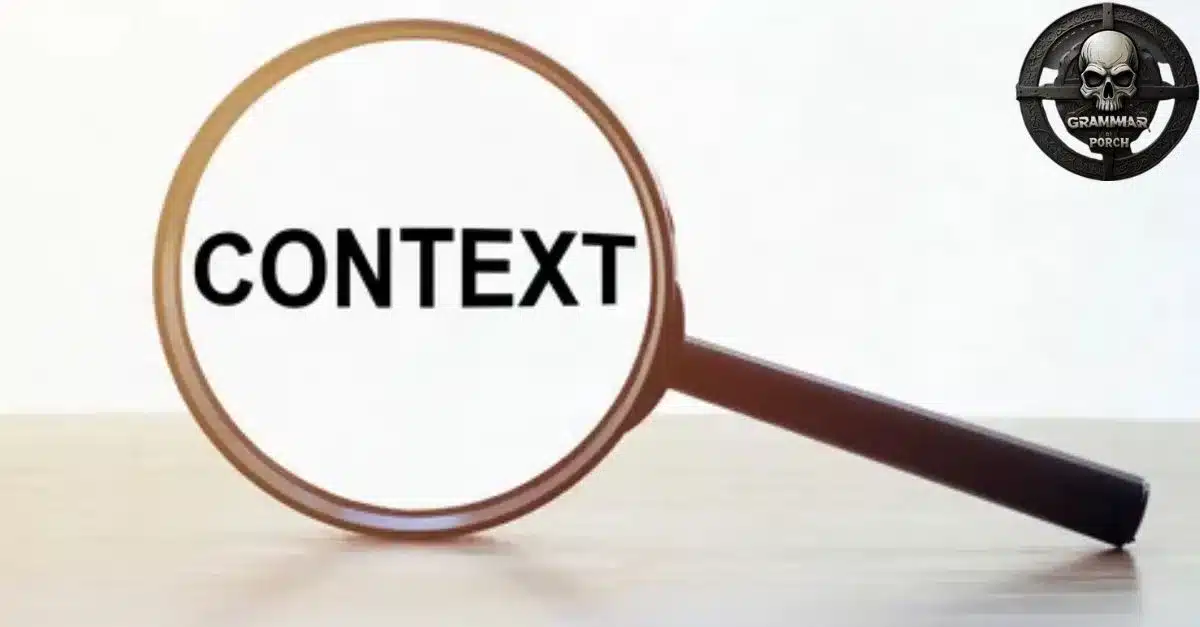
Historical Context
Historical context involves the time period in which the content was created or referenced. Events, political climates, and technological advancements impact the meaning of content over time.
Understanding historical context helps the audience interpret messages accurately by considering when they were created.
Cultural Context
Cultural context includes the values, beliefs, and social norms shared by a community or society. This context shapes the way content is received, as different cultures interpret information uniquely.
For instance, humor or symbols might carry different meanings across cultures.
Situational Context
Situational context refers to the specific circumstances or environment surrounding the communication. The purpose, place, and timing of a message can affect its interpretation.
For example, a formal speech in a courtroom will be received differently than a casual conversation in a coffee shop.
Social Context
Social context includes the relationships, interactions, and dynamics among people. It considers how people relate to each other and influences communication.
Group dynamics and social hierarchies can impact how content is perceived in a social setting.
How Context Changes Meaning
Context can transform the meaning of content completely. The same phrase might mean different things in varied contexts.
For instance, “breaking the ice” could refer to literally cracking ice in one context and starting a conversation in another. Recognizing the importance of context helps avoid misunderstandings.
Quick Summary
Content is the actual message or material being communicated, while context is the surrounding information that gives content meaning.
Both are essential in conveying a message effectively, as content without context can lead to confusion, and context without content lacks substance.
Balancing Content and Context
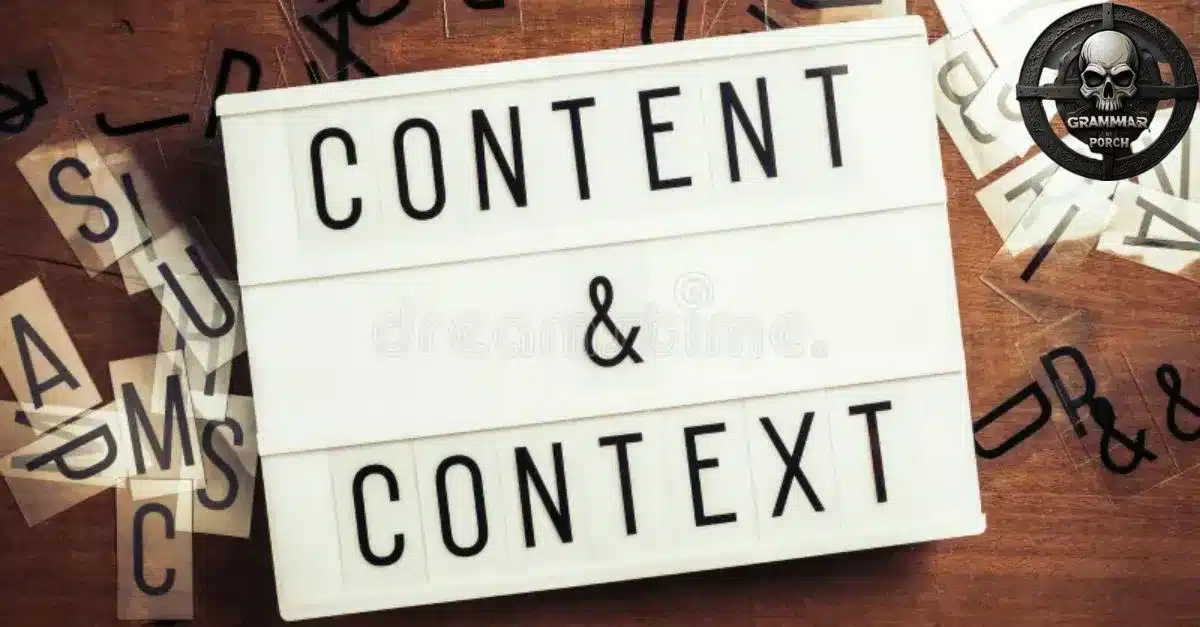
Why Content Alone Isn’t Enough
Content alone often leaves room for misinterpretation because it lacks the surrounding information that provides clarity.
Without context, content can feel incomplete or be misunderstood, as audiences may interpret it differently based on their own experiences.
How Content and Context Work Together
Content and context work together to create a complete, meaningful message. Content serves as the primary substance, while context frames it, ensuring the audience interprets it accurately.
When balanced effectively, both elements make communication more engaging, clear, and relevant.
Content vs Context Parts of Speech
Content is most often used as a noun, though it can also serve as an adjective. Context, on the other hand, is typically used as a noun. Recognizing these parts of speech helps clarify their proper usage in sentences.
Pronunciation of Content vs Context

Both words emphasize the first syllable: CON-tent and CON-text. Proper pronunciation aids in clear, verbal communication, reducing the likelihood of misunderstandings in spoken language.
Side-by-Side Comparison of Content vs Context
| Aspect | Content | Context |
| Definition | The material or substance of a message | The circumstances or setting surrounding content |
| Role | Provides main information | Frames interpretation of the content |
| Examples | Articles, videos, music | Cultural background, historical setting |
| Importance | Necessary for conveying ideas | Essential for clear understanding |
Which One is More Acceptable: Content vs Context
Content and Context are crucial, but each serves a different purpose. Content is more relevant for conveying direct information, while context is essential for providing understanding. They complement each other in effective communication.
Trick to Remember the Difference Between Content and Context
One way to remember the difference is by thinking that context surrounds content. Just as the setting surrounds a stage, context frames the message in a way that helps it make sense.
Mistakes to Avoid
Common Issues with Ignoring Context
Ignoring context often results in misunderstandings, as audiences might interpret content based solely on personal experiences. This can lead to miscommunication or unintended offense.
When Focusing Too Much on Content Goes Wrong
Placing too much emphasis on content without considering context can create an incomplete message. Content-heavy communication may lack relevance, making it harder for the audience to connect with the message.
How to Fix Misunderstandings
To fix misunderstandings, reassess the context and adjust content accordingly. Providing additional context or clarifying the background can help clear up confusion.
Origins of Content vs Context
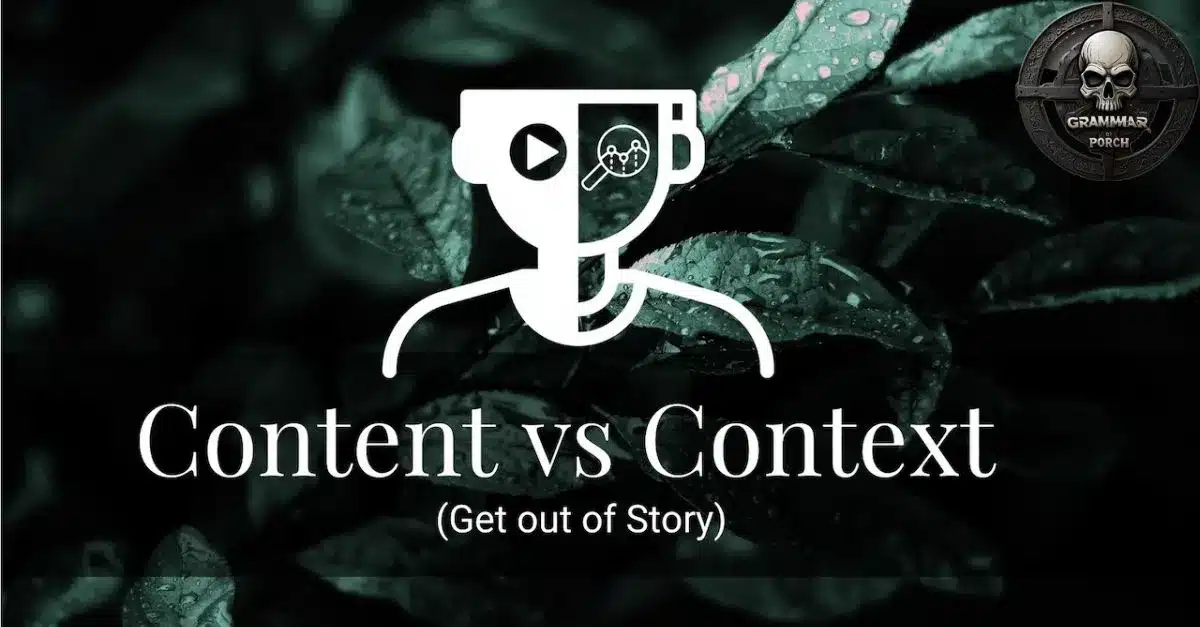
Content:
The term “content” originates from the Latin word “contentus,” meaning contained or held together. It has evolved to represent the material shared in communication.
Context:
“Context” stems from the Latin word “contextus,” meaning to weave together. It reflects how information is interwoven with its surroundings.
Synonyms of Content vs Context
Content
- Substance
- Material
- Subject matter
- Information
- Essence
- Core
- Theme
- Matter
- Message
- Material
Context
- Background
- Framework
- Circumstances
- Setting
- Environment
- Situation
- Surroundings
- Conditions
- Perspective
- Scope
Everyday Usage Examples
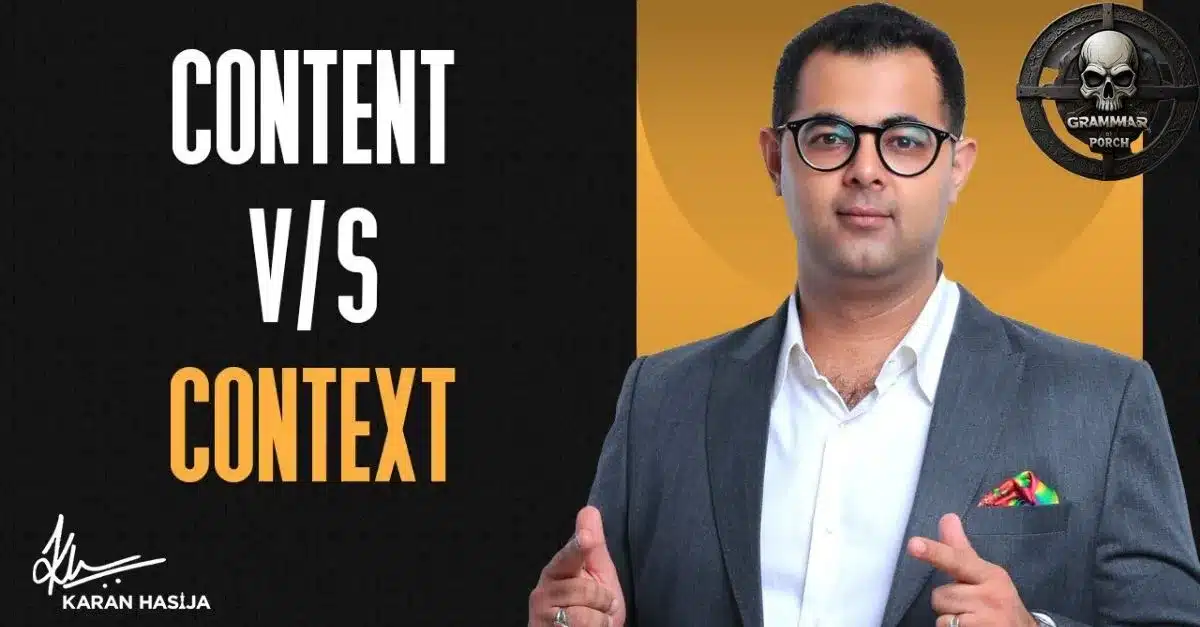
Content:
- The content of the book was insightful.
- He created content for social media.
- This lecture covers academic content.
- The content on the website was informative.
- Her video content is entertaining.
- They updated the digital content regularly.
- The article’s content focused on health.
- This email contains confidential content.
- Students analyzed the content of the text.
- His report included scientific content.
Context:
- In the context of history, this event is significant.
- People misinterpreted her words without context.
- Cultural context adds depth to understanding.
- Context matters in every conversation.
- The context of society explains this law.
- The context of the situation was complex.
- Context gives clarity to her intentions.
- He used humor in the right context.
- The article lacked sufficient context.
- The artist’s work is viewed in a cultural context.
FAQs
What is the main difference between content and context?
Content is the actual information or message, while context is the background or setting that gives it meaning.
Why does context matter in communication?
Context helps the audience interpret content correctly, making the message clearer and more relevant.
Can content exist without context?
Content can exist on its own, but without context, it may be misunderstood or lose its intended impact.
What are some examples of content types?
Examples include written articles, videos, audio recordings, and images.
How does context change the meaning of content?
Context, like culture or situation, frames content differently, often altering the audience’s interpretation.
Conclusion
Content and context together create clear, engaging, and meaningful communication. Content alone provides the main message, while context frames it for relevance and clarity.
Understanding the balance between content and context can transform communication, making it more effective, relatable, and impactful. For any writer, speaker, or communicator, recognizing and applying both elements ensures that messages are received and interpreted accurately by the audience.

Larry is an experienced blogger with a passion for simplifying grammar. With years of expertise in writing and language, he shares insightful tips on punctuation, synonyms, and the intricacies of English grammar at **Grammar Porch**. His approachable style helps readers improve their writing skills with ease.

